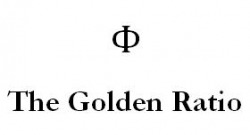First of all is number. -Pythagoras

The Golden Ratio has confounded man for millennia with its supposed mystical powers and seeming ubiquitousness. Yet, the ratio, represented by the Greek letter phi (pronounced either "fy" or "fee") and approximately equal to 1.618 (or, more precisely, one half times one plus the square root of five), is simply a number. For centuries, though, it has been more than that. It has been claimed that the ancient Greeks revered it above all else, incorporating it into art, architecture, and literature. The number is said to appear over and over again in nature, specifically in growth patterns in sunflowers and the chambered nautilus. As wonderful as this all sounds, though, most of it is entirely untrue. Phi does have some interesting mathematical properties, and it does occasionally appear in nature, but that's about it. This website will explore the nature of the Golden Ratio, both fact and fiction, in an attempt to lead the reader towards more valid, mathematical conclusions. Not everything about the so-called Divine Proportion is entirely perfect, but separating the true from the false is more difficult than it seems.
How to Read this Site
It is recommended that you follow the major topics horizontally from left to right across the page, starting here with "The Myth" and ending with "The Anthropology". Each section is named according to a specific aspect of the overarching theme of this site, which, as stated above, is the myth of the golden ratio as idealized by history and society. Within each major topic are smaller sub-pages, each focusing on a specific idea within that discipline or area of study. These can be read in any particular order. Within the site, most to all images will enlarge if clicked, and all citations are links to the page of works cited.
